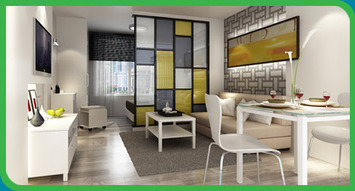
Published on Bangkok Post dated 18 December 2011 by Aliwassa Pathnadabutr, Managing Director of CBRE Thailand
The year 2011 has been one of the most fluctuating times for the residential property market, after the year started with slow movement and an influx of supply. Things improved with the hopes for the new government after the election. Then, the fourth quarter was marked by unexpected flooding with people busy looking after their properties. In 2012, the trend for the residential market will be for a focus on condominiums, while the housing market will need time to recover from the floods by way of new product designs, with buyers increasingly uncertain about location. Condominiums will be more popular among those seeking a city lifestyle. More people who had never lived in a condominium now have temporarily experienced living in condominiums in the downtown area during the floods. Although many were not used to being in a small space, we have found that many of these people like the convenience of a condominium lifestyle in terms of the downtown location, time savings and reduced hassle compared to a house.
The year 2011 has been one of the most fluctuating times for the residential property market, after the year started with slow movement and an influx of supply. Things improved with the hopes for the new government after the election. Then, the fourth quarter was marked by unexpected flooding with people busy looking after their properties. In 2012, the trend for the residential market will be for a focus on condominiums, while the housing market will need time to recover from the floods by way of new product designs, with buyers increasingly uncertain about location. Condominiums will be more popular among those seeking a city lifestyle. More people who had never lived in a condominium now have temporarily experienced living in condominiums in the downtown area during the floods. Although many were not used to being in a small space, we have found that many of these people like the convenience of a condominium lifestyle in terms of the downtown location, time savings and reduced hassle compared to a house.
Smaller Unit Sizes: The trend will be for smaller sized units. The size of the rooms will definitely be small at low-end to mid-range condominiums where the smallest one-bedroom unit will be around 25-30 square metres. In the high-end segment, rooms will also be less spacious than before but should be more efficiently laid out. For example, a popular size for one-bedroom units will be 45 – 55 sq.m., and 65 – 80 sq.m. for two-bedroom units, while a good three-bedroom unit can be 130 – 150 sq.m. rather than the existing 180 – 200 sq.m. The exception will be in the luxury and super luxury market where we have found that there is no definite answer concerning unit size and design.
Fully Furnished Units: Because more buyers today are end users than investors, they tend to choose condominiums that are ready to move in. From our experience in selling these condominiums, we have found that well-designed fully-furnished condominiums are more popular than those which are unfurnished. Previously, most developers offered only fully-fitted units as they believed that high-end purchasers would prefer to decorate the units to suit their tastes. Today, the market has changed. Those who have experienced the headache of furnishing a unit themselves know well that the results may not be as they had expected, and that the time and money invested may not match the outcome. To decorate a unit, you either have to hire a professional interior designer and contractors or you have to be prepared to “do-it-yourself” (DIY). Today, the conclusion is that fully-furnished units are the best option for a completed condominium project, provided that they are well designed and offer reasonably good quality for the price. However, for off-plan condominiums, a fully-furnished option will only be worthwhile if the buyers can see what it will look like.
Services to Occupiers: Another trend in living in a condominium will be the services provided by the management company. This can be a very controversial issue because the management company or the juristic person is supposed to look after only the common area. The common area fee is paid for the maintenance and management of the common area only. However, there is growing demand from condominium owners for repair and maintenance services, to sell and lease units, as well as offering housekeeping, valet parking and concierge services. Not all condominiums can afford to hire a branded hotel chain to manage this. However, the juristic person should be prepared to change the concept of the condominium and investigate how it will handle these requirements to benefit both the residents and the juristic person. This means ensuring that fees are charged to the residents for these additional services, with the money paid to the juristic person. In the meantime, there should be enough staff to handle the additional services to ensure the common areas are not ignored. If this is not done properly, one of the problems which arise in many condominiums is that the individual owners may ask for services from the staff and then pay the staff directly.
Detailed Designs: Trends in product design should definitely be influenced by the flooding. For example, basement car parking is to be avoided if not absolutely necessary. Machine and electrical rooms should be located above ground and electrical circuits should be designed with awareness of possible flooding at ground level. Flood barriers should also be considered, with a minimum number of entry points for water, to make it easier to control the entry of water into the building. Another controversial issue is the car parking area. In every building, little consideration has been given to the design of the car park because most developers have primarily been concerned about ensuring that the property complies with the regulations in terms of the number of cars rather than making sure that the parking area is really practical. Problems with the car park include insufficient parking spaces for the number of condominium units in buildings which have many small units. Other issues may be narrow access ramps and small parking spaces which cannot be realistically used. Issues which are particularly of relevance in high-end condominiums, where most buyers own expensive cars, include the provision of a car-wash area, drivers’ rooms and visitors’ parking. Other aspects include paying increased attention to detail to ensure realistic and practical designs, especially regarding the materials used which should be long lasting and easy to maintain rather than only looking good at the time of sale. In a more competitive market, all these points should form an integral part of the design plans and should be carefully considered as buyers are also likely to have more experience of living in a condominium.
Higher Prices: Bangkok condominiums have been undervalued for a couple of years compared with those in other key markets. With less new supply coming online in the Central Business District (CBD) and due to the new land costs and increased cost of construction, newly planned condominiums in 2012 especially in the high end segment and above will be more expensive. Pricing outside the CBD is more competitive and is likely to increase only in prime locations.
Hot Locations: The CBD and the areas surrounding mass-transit stations will continue to be in greatest demand. Other locations which will be popular will be an extension of the CBD which we call “midtown” and includes Rama IV, Ratchadapisek, Phra Kanong and Jatujak. These areas are just a short distance from the CBD and have supporting mass transit and retail facilities.
credit : CBRE Thailand
Fully Furnished Units: Because more buyers today are end users than investors, they tend to choose condominiums that are ready to move in. From our experience in selling these condominiums, we have found that well-designed fully-furnished condominiums are more popular than those which are unfurnished. Previously, most developers offered only fully-fitted units as they believed that high-end purchasers would prefer to decorate the units to suit their tastes. Today, the market has changed. Those who have experienced the headache of furnishing a unit themselves know well that the results may not be as they had expected, and that the time and money invested may not match the outcome. To decorate a unit, you either have to hire a professional interior designer and contractors or you have to be prepared to “do-it-yourself” (DIY). Today, the conclusion is that fully-furnished units are the best option for a completed condominium project, provided that they are well designed and offer reasonably good quality for the price. However, for off-plan condominiums, a fully-furnished option will only be worthwhile if the buyers can see what it will look like.
Services to Occupiers: Another trend in living in a condominium will be the services provided by the management company. This can be a very controversial issue because the management company or the juristic person is supposed to look after only the common area. The common area fee is paid for the maintenance and management of the common area only. However, there is growing demand from condominium owners for repair and maintenance services, to sell and lease units, as well as offering housekeeping, valet parking and concierge services. Not all condominiums can afford to hire a branded hotel chain to manage this. However, the juristic person should be prepared to change the concept of the condominium and investigate how it will handle these requirements to benefit both the residents and the juristic person. This means ensuring that fees are charged to the residents for these additional services, with the money paid to the juristic person. In the meantime, there should be enough staff to handle the additional services to ensure the common areas are not ignored. If this is not done properly, one of the problems which arise in many condominiums is that the individual owners may ask for services from the staff and then pay the staff directly.
Detailed Designs: Trends in product design should definitely be influenced by the flooding. For example, basement car parking is to be avoided if not absolutely necessary. Machine and electrical rooms should be located above ground and electrical circuits should be designed with awareness of possible flooding at ground level. Flood barriers should also be considered, with a minimum number of entry points for water, to make it easier to control the entry of water into the building. Another controversial issue is the car parking area. In every building, little consideration has been given to the design of the car park because most developers have primarily been concerned about ensuring that the property complies with the regulations in terms of the number of cars rather than making sure that the parking area is really practical. Problems with the car park include insufficient parking spaces for the number of condominium units in buildings which have many small units. Other issues may be narrow access ramps and small parking spaces which cannot be realistically used. Issues which are particularly of relevance in high-end condominiums, where most buyers own expensive cars, include the provision of a car-wash area, drivers’ rooms and visitors’ parking. Other aspects include paying increased attention to detail to ensure realistic and practical designs, especially regarding the materials used which should be long lasting and easy to maintain rather than only looking good at the time of sale. In a more competitive market, all these points should form an integral part of the design plans and should be carefully considered as buyers are also likely to have more experience of living in a condominium.
Higher Prices: Bangkok condominiums have been undervalued for a couple of years compared with those in other key markets. With less new supply coming online in the Central Business District (CBD) and due to the new land costs and increased cost of construction, newly planned condominiums in 2012 especially in the high end segment and above will be more expensive. Pricing outside the CBD is more competitive and is likely to increase only in prime locations.
Hot Locations: The CBD and the areas surrounding mass-transit stations will continue to be in greatest demand. Other locations which will be popular will be an extension of the CBD which we call “midtown” and includes Rama IV, Ratchadapisek, Phra Kanong and Jatujak. These areas are just a short distance from the CBD and have supporting mass transit and retail facilities.
credit : CBRE Thailand



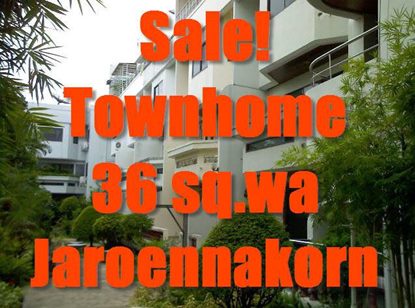


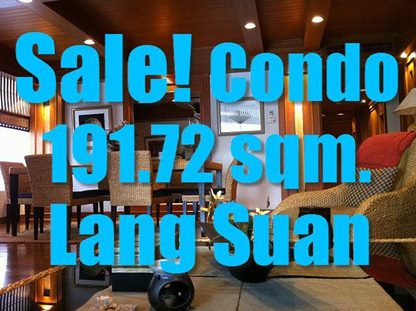
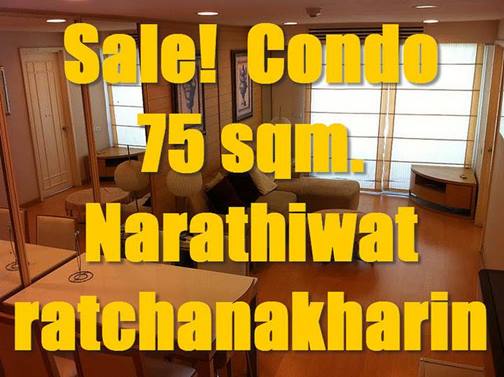

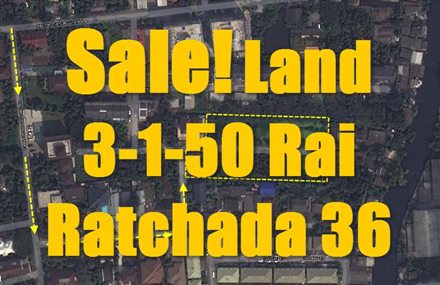


 RSS Feed
RSS Feed
